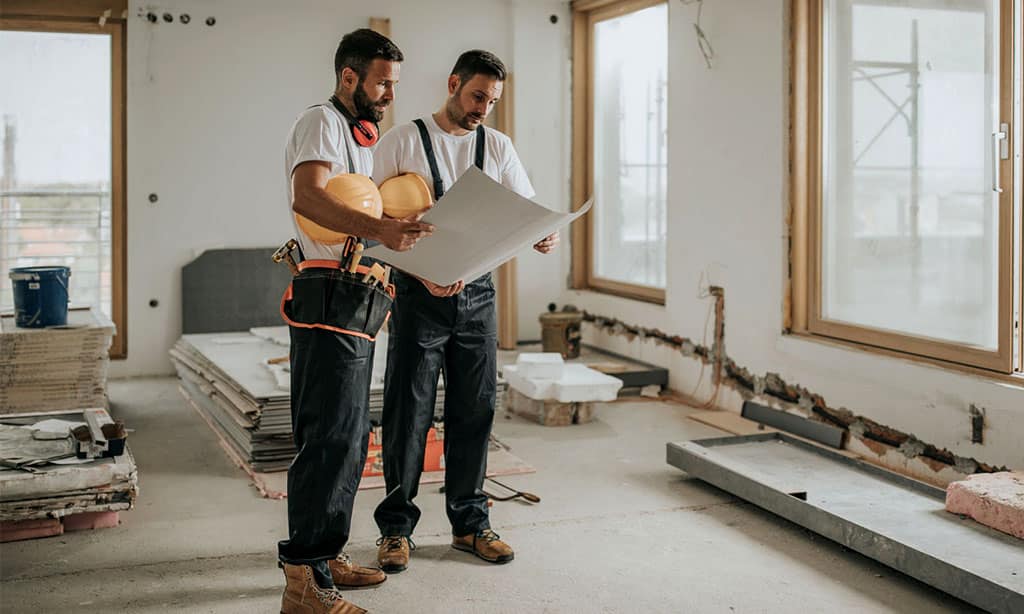Home improvement projects can be exciting, but they can also be stressful, especially when it comes to finding the right contractor. Whether you’re planning a small renovation or a major remodel, hiring the right professional is crucial for the success of your project.
This article will provide you with 10 essential tips to help you navigate the process of hiring a home improvement contractor.
By following these guidelines, you’ll be better equipped to find a reliable, skilled professional who can turn your home improvement dreams into reality.
1. Define Your Project Clearly
Before you start looking for a contractor, it’s important to have a clear idea of what you want to accomplish with your home improvement project. This first step is crucial for several reasons:
- It helps you communicate your vision to potential contractors
- It allows contractors to provide more accurate estimates
- It reduces the likelihood of misunderstandings and disputes later on
- Take some time to write down your project goals, including:
- Specific changes you want to make
- Materials you prefer
- Your budget range
- Your desired timeline
Consider creating a simple sketch or collecting images of similar projects to help illustrate your ideas. The more clearly you can define your project, the easier it will be to find a contractor who can meet your needs.
2. Research Potential Contractors
Once you have a clear project plan, it’s time to start looking for potential contractors. Here are some effective ways to find reputable professionals:
- Ask friends, family, and neighbors for recommendations
- Check with local home improvement stores or lumberyards
- Use online directories and review sites like Angi (formerly Angie’s List) or HomeAdvisor
- Contact your local homebuilders’ association
As you research, create a list of at least three to five contractors to consider. This will give you a good range of options and allow you to compare different professionals.
When researching online, pay attention to:
- Overall ratings and number of reviews
- Specific comments about the quality of work and professionalism
- How the contractor responds to negative reviews
Remember that while online reviews can be helpful, they shouldn’t be your only source of information. Personal recommendations from people you trust can be particularly valuable.
3. Check Credentials and Qualifications
Once you have a list of potential contractors, it’s crucial to verify their credentials and qualifications. This step helps ensure that you’re working with a legitimate, skilled professional. Here’s what to check:
License:
Most states require contractors to be licensed. Check with your state’s licensing board to verify that the contractor’s license is current and in good standing. Working with an unlicensed contractor can lead to legal issues and may void your home insurance.
Insurance:
Make sure the contractor has both general liability insurance and workers’ compensation insurance. This protects you from liability if someone is injured on your property during the project.
Certifications:
Look for contractors who have additional certifications in their field. For example, a certified kitchen and bath remodeler may have more specialized knowledge for those types of projects.
Professional associations:
Membership in professional organizations like the National Association of Home Builders (NAHB) or the National Association of the Remodeling Industry (NARI) can indicate a commitment to professional standards.
Don’t hesitate to ask contractors for proof of these credentials. Reputable professionals will be happy to provide this information.
4. Request and Compare Multiple Bids
Once you’ve narrowed down your list to contractors with solid credentials, it’s time to request bids. Here’s how to approach this step:
- Provide each contractor with the same detailed project description to ensure fair comparisons
- Ask for itemized bids that break down costs for materials, labor, profit margins, and other expenses
- Request that bids include the projected timeline for the project
- Aim to get at least three bids to compare
When comparing bids, remember that the lowest price isn’t always the best choice. Consider factors such as:
- The quality of materials proposed
- The contractor’s experience and reputation
- The projected timeline
- Communication style and professionalism during the bidding process
Be wary of bids that are significantly lower than others. This could indicate that the contractor is cutting corners or may not fully understand the scope of the project.
5. Check References and Past Work
Before making a final decision, take the time to check references and past work of your top choices. This step can provide valuable insights into what it’s like to work with the contractor. Here’s what to do:
- Ask the contractor for a list of past clients you can contact
- Request to see examples of completed projects similar to yours
- If possible, visit a current job site to see how the contractor operates
When speaking with references, ask questions like:
- Was the project completed on time and within budget?
- Did the contractor communicate well throughout the process?
- Were there any unexpected issues, and how were they handled?
- Would you hire this contractor again?
Don’t be afraid to ask for several references, and actually follow up with them. The experiences of past clients can be incredibly informative.
6. Understand the Contract
Once you’ve chosen a contractor, it’s crucial to have a detailed, written contract. This document protects both you and the contractor by clearly outlining the terms of your agreement. A good contract should include:
- Detailed description of the work to be done
- Materials to be used, including brands and models where applicable
- Timeline for the project, including start and estimated completion dates
- Payment schedule
- Proof of insurance and licenses
- Permit information
- Procedure for changes or additional work
- Warranty information
Take the time to read the contract carefully and ask questions about anything you don’t understand. Don’t be pressured into signing until you’re completely comfortable with all the terms.
7. Discuss Payment Terms
Payment terms should be clearly outlined in your contract, but it’s worth discussing them in detail with your contractor. Here are some key points to consider:
- Never pay the full amount upfront. A typical payment schedule might start with a down payment, progress payments at predetermined checkpoints, and a final payment upon completion.
- The down payment should typically be no more than 10-15% of the total project cost.
- Tie payments to completed work, not calendar dates.
- Hold back at least 10% of the total cost until the project is fully complete and you’re satisfied with the work.
Be wary of contractors who ask for large upfront payments or who want to be paid in cash. These can be red flags for potential scams.
8. Prepare for the Project
Before work begins, take some time to prepare your home and yourself for the project. This can help things run more smoothly and reduce stress. Here are some steps to take:
- Clear the work area and protect any valuable items
- Discuss daily work hours and access to your home with the contractor
- Establish a primary point of contact for communication
- Set up a designated area for tools and materials
- Discuss how to handle unexpected issues or changes
- Prepare for potential disruptions to your daily routine
Good preparation can help minimize surprises and keep your project on track.
9. Communicate Effectively
Throughout the project, maintain open and clear communication with your contractor. This can prevent misunderstandings and help address any issues quickly. Here are some communication tips:
- Establish a regular check-in schedule (daily or weekly, depending on the project scope)
- Use a consistent method of communication (e.g., email, phone, or in-person meetings)
- Keep a record of all important discussions and decisions
- Address any concerns promptly and directly
- Be available to make decisions when needed to avoid delays
Remember, good communication goes both ways. Be responsive to your contractor’s questions and concerns as well.
10. Monitor Progress and Address Issues Promptly
As the project progresses, stay involved and monitor the work. This doesn’t mean micromanaging, but rather staying informed and addressing any issues promptly. Here’s what to keep an eye on:
- Adherence to the timeline
- Quality of work
- Cleanliness of the work site
- Any deviations from the original plan
If you notice any issues or have concerns, bring them up with your contractor immediately. Most problems are easier to resolve when addressed early.
Conclusion
Hiring a home improvement contractor can seem daunting, but by following these 10 tips, you can approach the process with confidence.
By taking these steps, you’ll be well on your way to finding a reliable contractor who can bring your home improvement vision to life. Remember, the key to a successful home improvement project is not just in the final result, but also in the process of getting there.
With the right contractor and approach, you can make your home renovation journey a positive and rewarding experience.










































